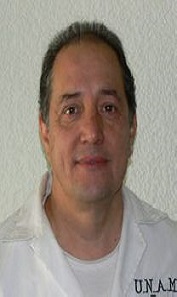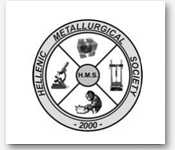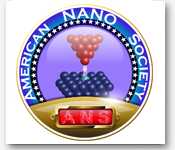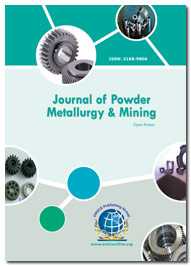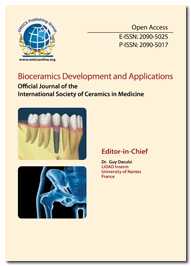Theme: Highlighting and Focusing on future prospects in Materials Science & Engineering
Materials Science-2015
OMICS Group invites all the participants across the globe to attend the 4th International Conference and Exhibition on Materials Science and Engineering on September 14-16, 2015, Florida, USA. This scientific gathering guarantees that offering the thoughts and ideas will enable and secure you the theme “Highlighting and Focusing on future prospects in Materials Science & Engineering”. It provides a premier technical forum for reporting and learning about the latest research and development, as well as for launching new applications and technologies. Materials Science will continue its conference series to explore the new trends and techniques in this field.
Scientific Tracks
Track 1: Materials Science and Engineering
Materials Science and Engineering is a multifaceted topic dealing with the discovery and designing of new materials. Traditional examples of materials are metals, ceramics and polymers. Advanced materials include semiconductors, nanomaterials, biomaterials. Ceramics and Glass comes under brittle materials. The boom for materials science in the United States was catalyzed in part by the Advanced Research Projects Agency funded a series of university-hosted laboratories in the early 1960s "to expand the national program of basic research and training in the materials sciences. Research in materials science is vibrant and consists of many avenues. In April 2013, the Garmor, Graphene Company received $300,000 from the Institute for Commercialization of Public Research. Forbes listed Broadcom, a semiconductor company as one of The Happiest Companies to Work For in 2015. 65+ Universities and Institutes offering Materials Science course at UG, PG and PhD degrees in USA.
Track 2: Nanotechnology in Materials Science
Nanotechnology ("nanotech") is the manipulation of matter on an atomic, molecular, and supramolecular scale. National Nanotechnology Initiative, describes nanotechnology as the handling matter with at least one dimension sized from 1 to 100 nanometers. Nanotechnology is a diversified field which involves fields of science such as medicine, engineering, technology, materials science, electronics, life sciences, fabrication, etc. Researchers presently debate the future implications of nanotechnology. As per BCC report the global market for nanotechnology was valued at nearly $20.1 billion in 2011 and should reach $20.7 billion in 2012. Total sales are expected to reach $48.9 billion in 2017 after increasing at a five-year compound annual growth rate (CAGR) of 18.7%. According to the times list of higher education, top 5 Nanotechnology institutes are located in USA. They are Princeton University, Massachusetts Institute of Technology (MIT), Harvard University, California Institute of Technology (Caltech) and Stanford University.
Track 3: Energy Materials
Research into hydride materials for energy applications typically focuses on enhancing gravimetric storage density and ion transport of the materials. However, the requirements for stationary applications such as fuel cells can be significantly different and amenable to a broader class of potential materials. Multiple geophysical and social pressures are forcing a shift from fossil fuels to renewable and sustainable energy sources. To effect this change, we must create the materials that will support emergent energy technologies. Solar energy is the utmost priority to develop photovoltaic cells that are efficient and cost effective. Department of Materials Science and Engineering, Stanford University, conducting extensive research on Photovoltaics, Energy storage and Hydrogen storage to meet global Energy requirements. The global market value of components for PEM fuel cell membrane electrode assembly (MEA) as BCC report is estimated $383 million in 2010. This market is expected to grow at a 20.6% compound annual growth rate (CAGR) over the 5-year forecast period to reach $977 million in 2015.
Track 4: Mining and Metallurgy
The extraction of valuable minerals or other geological materials from the earth is called as Mining, where as Metallurgy is the field of Materials Science that deals with physical and chemical nature of the metallic & intermetallic compounds and alloys. Different techniques and technologies used in the extraction and production of various metals are extraction of metals from ores, purification, casting, plating, spraying, etc. in the series of processes, the metals are subjected to thermogenic and cryogenic conditions to analyze the corrosion, strength & toughness and to make sure that the metal is creep resistant. In 2015, Global Ore mining industry performance has been weak due to falling iron ore prices and stagnating demand from emerging markets. However, industry performance is expected to improve over the five years to 2020, with revenue expected to rise.
Track 5: Surface Science and Engineering
The study of physical and chemical process that occurs with the combination of two phases, including solid–liquid/ solid–gas/ solid–vacuum/ liquid–gas interfaces is termed as Surface Science and the practical application of surface science in related fields like chemistry and physics is known as Surface Engineering. Surface Chemistry deals with the modification of chemical composition of a surface by introducing functional groups and certain elements whereas Surface physics deals with the physical changes that occur at interfaces. Techniques involved in Surface engineering are X-ray photoelectron spectroscopy, Auger electron spectroscopy, low-energy electron diffraction, electron energy loss spectroscopy, thermal desorption spectroscopy, ion scattering spectroscopy, secondary ion mass spectrometry, dual polarization interferometry, etc. The North American market for high-performance ceramic coatings was worth $1.3 billion in 2010 and $1.4 billion in 2011. It is expected to grow to more than $2.0 billion by 2016, a projected five-year compound annual growth rate (CAGR) of 7.4%.
Track 6: Biomaterials and Tissue Engineering
Biomaterial is a matter that is related with biological systems. The science of Biomaterials surrounds the elements of medicine, biology, chemistry, tissue engineering and materials science. Biomimetics or biomimicry is the imitation of the models, systems, and elements of nature for the purpose of solving complex human problems has given rise to new technologies inspired by biological solutions at macro and nanoscales. The global market for nanoengineered surfaces was estimated to total $183 million in 2012 and is projected to increase to $622 million in 2017; the market should total $799.3 million by 2018 and nearly $2.5 billion by 2022, and have a five-year compound annual growth rate (CAGR) for of 27.7% from 2012 to 2017.
Track 7: Materials Chemistry (Organic and Inorganic) and Sustainable Chemistry
Green chemistry, also called sustainable chemistry, is a philosophy of chemical research and engineering that encourages the design of products and processes that reduce the use and production of hazardous substances.The U.S. market for green building materials reached nearly $40.0 billion and $43.8 billion in 2013 and 2014, respectively. This market is expected to grow at a compound annual growth rate (CAGR) of 9.5% to nearly $69.0 billion over the period 2014-2019.
Track 8: Electrical, Optical and Magnetic Materials
Materials that can be magnetized and attracted to a magnet are called ferromagnetic materials (or ferrimagnetic). These include iron, nickel, cobalt, some alloys of rare earth metals, and some naturally occurring minerals such as lodestone. Magnetic Materials also have medical applications and it is expected that they will increase in the future. Examples are carrying medications to exact locations within the body and the use as a contrasting agent for MRI scans, assessing the risk of organ damage in hereditary hemochromatosis, determining the dose of iron chelator drugs required for patients with thalassemia, and Now-a-days Scientists are also working on the development of synthetic magnetic particles that can be injected into the human body for the diagnosis and treatment of disease. Spintronics, also known as spinelectronics or fluxtronics, is the study of the intrinsic spin of the electron and its associated magnetic moment, in addition to its fundamental electronic charge, in solid-state devices. Global electronic chemicals and materials demand were $22.7 billion in 2005, which is expected to grow at higher rate of around 8.9% per annum through 2010 to reach $34.8 billion.
Track 9: Advances in Instrumentation Technology
Instrumentation is the use of measuring instruments to monitor and control a process. It is the art and science of measurement and control of process variables within a production, laboratory, or manufacturing area. Instrumentation engineering is the engineering specialization focused on the principle and operation of measuring instruments that are used in design and configuration of automated systems in electrical, pneumatic domains etc. They typically work for industries with automated processes, such as chemical or manufacturing plants, with the goal of improving system productivity, reliability, safety, optimization, and stability. Due to the technological innovations and increased demand on the process control systems, the process automation market is gaining advantage in the recent years. The growth of process automation and instrumentation is estimated to be 6.08% from 2014 to 2020, and forecasted to reach market revenue of $180 billion in 2020.
Track 10: Emerging Areas of Materials Science and Nanotechnology
Emerging Technologies are those technical innovations which represent progressive developments within a field for competitive advantage. List of currently emerging technologies, which contains some of the most prominent ongoing developments, advances, and innovations in Materials Science and Nanotechnology are: Graphene, Fullerene, Conductive Polymers, Metamaterials, Nanomaterials: carbon nanotubes, Superalloy, Lithium-ion batteries, etc. Total worldwide sales revenues for nanotechnology were $11,671.3 million in 2009, and are expected to increase to more than $26000 Million in 2015, a compound annual growth rate (CAGR) of 11.1%. The largest nanotechnology segments in 2009 were Nanomaterials. All Nanomaterials will increase from $9,027.2 million in 2009 to nearly $19,621.7 million in 2015, a compound annual growth rate (CAGR) of 14.7%.
Track 11: Polymer Technology
Polymer Engneering is generally an engineering field that designs, analyses, and/or modifies polymer materials. Polymer engineering covers aspects of petrochemical industry, polymerization, structure and characterization of polymers, properties of polymers, compounding and processing of polymers and description of major polymers, structure property relations and applications. The basic division of polymers into thermoplastics and thermosets helps define their areas of application. The latter group of materials includes phenolic resins, polyesters and epoxy resins, all of which are used widely in composite materials when reinforced with stiff fibres such as fibreglass and aramids. The conductive plastics segment forms the largest submarket of the overall electro-active polymers market with an expected $2.6 billion by 2017, at a CAGR of 6.1% from 2012 to 2017.
Materials Science or Materials Engineering is the study of all of the materials we see around us every day. Materials Science or Engineering forms a bridge between the sciences and engineering. It allows theory to be put into practice in a way which benefits everybody, since everything we do every day involves materials. Materials Scientists or Engineers look at all of the different groups of materials, metals and alloys, polymers, ceramics and composites. They develop new materials for new applications, improve existing materials to give improved performance and look at ways in which different materials can be used together.
Operating Committee invites all the participants across the globe to attend the 4th International Conference and Exhibition on Materials Science and Engineering on September 14-16, 2015, Florida, USA. Materials Science-2015 covers a broad range of topics to discuss on this international platform by conducting keynote lectures, plenary speeches, workshops and poster presentations. Materials Science-2015 highlights on advancements in Materials Science & Engineering and Nanotechnology.
For more details please visit http://materialsscience.conferenceseries.com/
Scope and Importance
Materials Science is designed to offer comprehensive sessions that address recent advancements and new strategies for development of new materials for global requirements with an objective to install a dialogue between industries and academic organizations and knowledge transfer from research to industry. Materials Science-2015 covers the areas of Materials Science and Engineering, Energy Materials, Mining and Metallurgy, Surface Science and Engineering, Biomaterials and Tissue Engineering, Materials Chemistry, Polymer Technology, Emerging fields in Materials Science and Nanotechnology.
Why Florida?
Florida is a state in the south eastern region of the United States, bordered to the west by the Gulf of Mexico, to the north by Alabama and Georgia, to the east by the Atlantic Ocean, and to the south by the Straits of Florida. Florida is the 22nd most extensive, the 4th most populous, and the 8th most densely populated of the 50 United States. The state capital is Tallahassee, the largest city is Jacksonville, and the largest metropolitan area is the Miami metropolitan area.
Much of Florida is a peninsula between the Gulf of Mexico, the Atlantic Ocean, and the Straits of Florida. Its geography is notable for a coastline, omnipresent water and the threat of hurricanes. Florida has the longest coastline in the contiguous United States, encompassing approximately 1,350 miles and is the only state that borders both the Gulf of Mexico and the Atlantic Ocean. Much of the state is at or near sea level and is characterized by sedimentary soil. The climate varies from subtropical in the north to tropical in the south. Some of its most iconic animals, such as the American alligator, crocodile, Florida panther and the manatee, can be found in the Everglades National Park.
Four universities in Florida rank among the world’s best, in the 2013/14 QS World University Rankings. Three of these are public universities; University of Florida, Florida State University, University of South Florida and the University of Miami (private). All of these the top universities in Florida are comprehensive institutions, offering courses in a wide range of subject areas.
Why to attend???
Materials Science-2015 lays the best platform to globalize your research by installing a dialogue between industries and academic organizations and knowledge transfer from research to industry. Materials Science-2015 aims in proclaim knowledge and share new ideas amongst the professionals, industrialists and students from research areas of Materials Science and Nanotechnology to share their research experiences and indulge in interactive discussions and special sessions at the event.
A Unique Opportunity for Advertisers and Sponsors at this prestigious event:
http://www.omicsgroup.com/conferences/ACS/conference/pdfs/materialsscience2015_Sponsorship.pdf
Glance at Market of Materials Science and Engineering
Advanced materials category covers a range of industries including ceramics, glass, metals, alloys, construction materials and other high technology processing areas. 2009 was one of the most difficult years for the global economy, and the material test equipment market was no exception, witnessing an almost xx percent decline in revenue.
The U.S. Bureau of Labor Statistics (BLS) produces annual wage estimates for more than 800 individual occupations. Newly released figures for 2012 put BLS Code 19-2032 (an occupational group encompassing materials scientists) in 82nd place in yearly wages. The group, which includes 7,970 employees across the country, posted an average annual salary of $89,740.
for more details please click here
Conference Highlights
- Materials Science and Engineering
- Nanotechnology in Materials Science
- Energy Materials
- Mining and Metallurgy
- Surface Science and Engineering
- Biomaterials and Tissue Engineering
- Materials Chemistry (Organic and Inorganic) and Sustainable Chemistry
- Electrical, Optical and Magnetic Materials
- Advances in Instrumentation Technology
- Emerging Areas of Materials Science and Nanotechnology
- Polymer Technology
To share your views and research, please click here to register for the Conference.
To Collaborate Scientific Professionals around the World
| Conference Date | September 14-30, -0001 | ||
| Sponsors & Exhibitors |
|
||
| Speaker Opportunity Closed | Day 1 | Day 2 | Day 3 |
| Poster Opportunity Closed | Click Here to View | ||
Useful Links
Special Issues
All accepted abstracts will be published in respective Our International Journals.
- Journal of Material Sciences & Engineering
- Journal of Powder Metallurgy & Mining
- Bioceramics Development and Applications
Abstracts will be provided with Digital Object Identifier by












